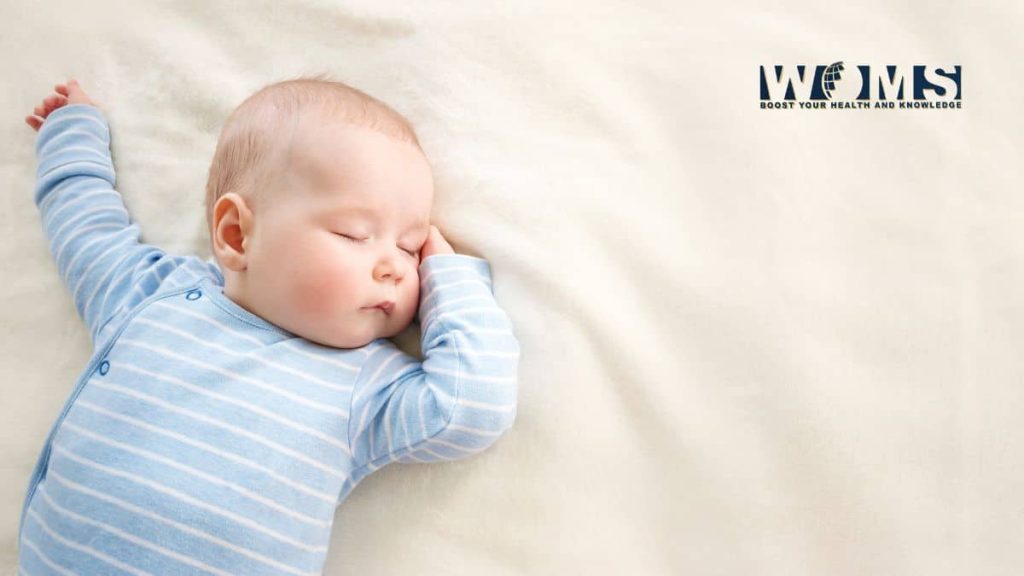How To Put A Baby To Sleep In 40 Seconds

Do you know how to put a baby to sleep in 40 seconds? Sleeping a baby is a delicate process. Individuals are required to be aware of what works and don’t work for their infant if they desire the baby to sleep soundly and obtain the rest they require.
You’ll learn how to put your baby to sleep in less than 40 seconds by reading this article. It will assist you in deciding what kind of bedding is ideal for your babies, how to maintain the room’s tranquility, and why having a schedule for your baby’s bedtime is crucial.
The Types Of Infants
Observing your baby’s sleeping patterns will quickly reveal what kind of baby you have.
- The first kind of infant has no issues sleeping all night long. He or she does not stir from 9.00 p.m. to 6.00 a.m. We call this a good sleeper.
- The second kind of infant will not rest soundly at night. He or she awakes crying on this occurrence every two hours. A difficult sleeper is someone who does this.
What distinguishes these two groups of infants so sharply? Simply said, one of them is more worn out than the other. A sound sleeper is more energetic than a restless one. Understanding what is and is not effective for your infant is crucial in light of this.
You may do a few things to encourage how to put a baby to sleep in 40 seconds. Ensure the space is calm and dark first. The baby’s body will receive a cue from this that it is time to sleep. Second, wrap a towel tightly around your infant.
This will make them feel protected and comfortable, which frequently helps newborns nod out more quickly. Last but not least, softly massage your child or offer them a soother. They may feel calmed and go off to sleep as a result. One should be capable of putting the baby down and making how to put a baby to sleep in 40 seconds if you use these strategies.
Why Do Babies Struggle With Sleep?
It’s very important to know the cause of insomnia in infants before getting the answer to your query about how to put a baby to sleep in 40 seconds. Here are a few reasons why babies struggle with sleep.
Infant anxiety
For newborns, the atmosphere outside of their mother is completely different, they lack a feeling of protection, and the outside world can rapidly make them anxious. Babies also experience emotional distress at nighttime when their mother is not present; as a result, infants feel exhausted because they don’t want to be apart from their mothers.
Environmental Convenience
Brightness, music, heat, odor, and seasonal changes are all external stimuli for newborns when they enter obscure surroundings. Although babies’ varied sensory skills continually improve as they grow, their capacity to filter knowledge is limited.
Therefore, babies are easily disturbed, find it hard to focus, and usually have problems falling asleep whenever there is a bright light, loud noise, an unfavorable temperature, or bad odors in their resting surroundings.
The baby is too tired to fall asleep
Due to the ease with which outside forces can disturb an infant’s sleep, newborns require a sizable amount of time to rest. During their first four months, babies exhibit sleeping behaviors before bedtime. 10 minutes just after the activity has ended, babies will be exhausted if mums don’t recognize their baby’s sleeping indications early.
Extremely tired babies won’t sleep. The baby will probably cry a lot and have a hard time falling asleep in this overly exhausted condition. An additional issue is that moms rarely wake sleeping newborns, which makes it difficult for any of them to go sleep even when they’re not sufficiently fatigued to go to bed every night.
How To Put A Baby To Sleep In 40 Seconds With Ease
Here are some tips to make your baby sleep within 40 seconds:
Ensure The Space Is Silent And Dark
Babies supposedly fall asleep more quickly in a silent, darkened environment. While it might be the case, there are several activities parents can do to encourage babies to fall asleep even more quickly. Ensure the space is calm and dark first. After that, experiment with a white noise gadget or app to assist in the baby’s relaxation. If you want to make your infant feel secure and at ease in the dark, you may also try and use a bedside lamp.
Last but not least, bear in mind to maintain the cot or cradle far from any doors or windows that can let illumination or sounds in. By adopting these simple suggestions, parents may assist in how to put a baby to sleep in 40 seconds and much more comfortably.
The Constant Atmosphere
In this context, “environment” refers to the physical environment. Constantly refers to having the same atmosphere while laying in bed and sleeping. The right choice to sleep is in bed, which has two benefits. The first is that it is simpler for the baby to connect the bedtime routine with sleep. The infant may also discover that it feels safer when it is in the exact posture as when it was sleeping whenever it awakes. this is the second tip for the question of how to put a baby to sleep in 40 seconds.
The Tissue Trick
The tissue trick is among the most effective ways how to put a baby to sleep in 40 seconds. It’s amazing just what a piece of tissue paper could accomplish. Simply drag the tissue well over the child’s face several times while being gentle and careful until you’ve seen the baby’s eyes start closing. That’s all there is to it, and it always succeeds! It’s important to remember that now the tissue must be dry; if it’s damp, it simply will not work and will only make your infant more inconvenient and much less prone to go to sleep.
To Calm Them, Massage Them
Whenever the baby wakes up during the night, use massage to help soothe them back to sleep. Their cheeks and palms can be more softly stroked before bed than when they rise to create a feeling of relaxation which will quickly take them back to sleep. Before actually laying babies to sleep every night, parents can however attempt this. Offer your baby a warm bath (around 100 degrees Fahrenheit) and offer them a relaxing massage
Bathing
Bathing your child in warm water, covering them with a comfortable duvet to heat them, and drying them off with a soft towel before actually replacing them. Babies will remain relaxed as well as at ease when drifting off to bed if you breastfeed or just use a bottle with formulas while giving them a gentle pat on the back in the shape of the heart.
Some other approach on how to put a baby to sleep in 40 seconds is to lay flat with your baby on your belly so that the rhythm of your heart rate and blood pressure simulates the womb.
Read A Bedtime Story Or Sing A Lullaby
It is well known that lullabies and bedtime stories help babies fall asleep more quickly. Additionally, science supports it. A study from researchers by Pediatrics indicated that babies who have been reading a tale fell asleep more quickly than someone who was just playing a tape of the same narrative.
According to experts, babies can fall asleep due to the rhythm and pitch of underlying vocalizations. Getting read to by a parent or caregiver has also been found to foster connection and intimacy. So the next day when your child has trouble falling asleep, try singing to them! It might work, after all. And also solve your problem of how to put a baby to sleep in 40 seconds.

The 3 Essential Rules On How To Put A Baby To Sleep In 40 Seconds
You will have to take care of a lot more activities for your baby because they are a small individual. Parents would be in charge of nearly every element of your baby’s education from the moment a child is conceived until they are about two years old. In addition to teaching the child to move, speak, and explore, this encompasses eating, wiping, showering, changing diapers, and clothing, and falling asleep.
However, one task parents won’t have to perform is putting one’s infant to sleep. Like such an adult, he or she will go to sleep when the time is right for him or her. The following are the key guidelines for the baby on how to put a baby to sleep in 40 seconds:
- Babies should generally sleep for 12 hours straight.
- Your infant should snooze on their back.
- Whenever one infant is awake, parents should hold, massage, or swing him or her.
Conclusion
When you’re seeking a quick method to lay the baby to sleep, use this guide on how to put a baby to sleep in 40 seconds. Of course, every baby is unique, so you might need to try various things to discover whatever makes the most sense for your baby, but the basic ideas are clear-cut and easily understandable.
FAQs
Why Would My Baby Wake Up Right After I Lay Her Down?
The quick positional change is detected by the vestibular system of your youngster. Their proprioception informs individuals that their body is at a changed location concerning their atmosphere using sensory impulses from the epidermis, bones, and musculature. It makes sense that a quick shift in positioning or motion can awaken someone.
What Quickly Puts Infants To Sleep?
Feeding the baby in a silent, dark environment. allowing the infant to cry for a while before breastfeeding (If something other than hunger, such as noise, startled them awake, they may fall back asleep.) putting the baby back to sleep with the help of a pacifier and a gentle touch.
Why Do Babies Struggle With Sleep?
There are many reasons why babies struggle to fall asleep, but the top seven include emotional distress, exhaustion, overstimulation, teething, reaching a landmark, traveling, and sickness or ailment.




